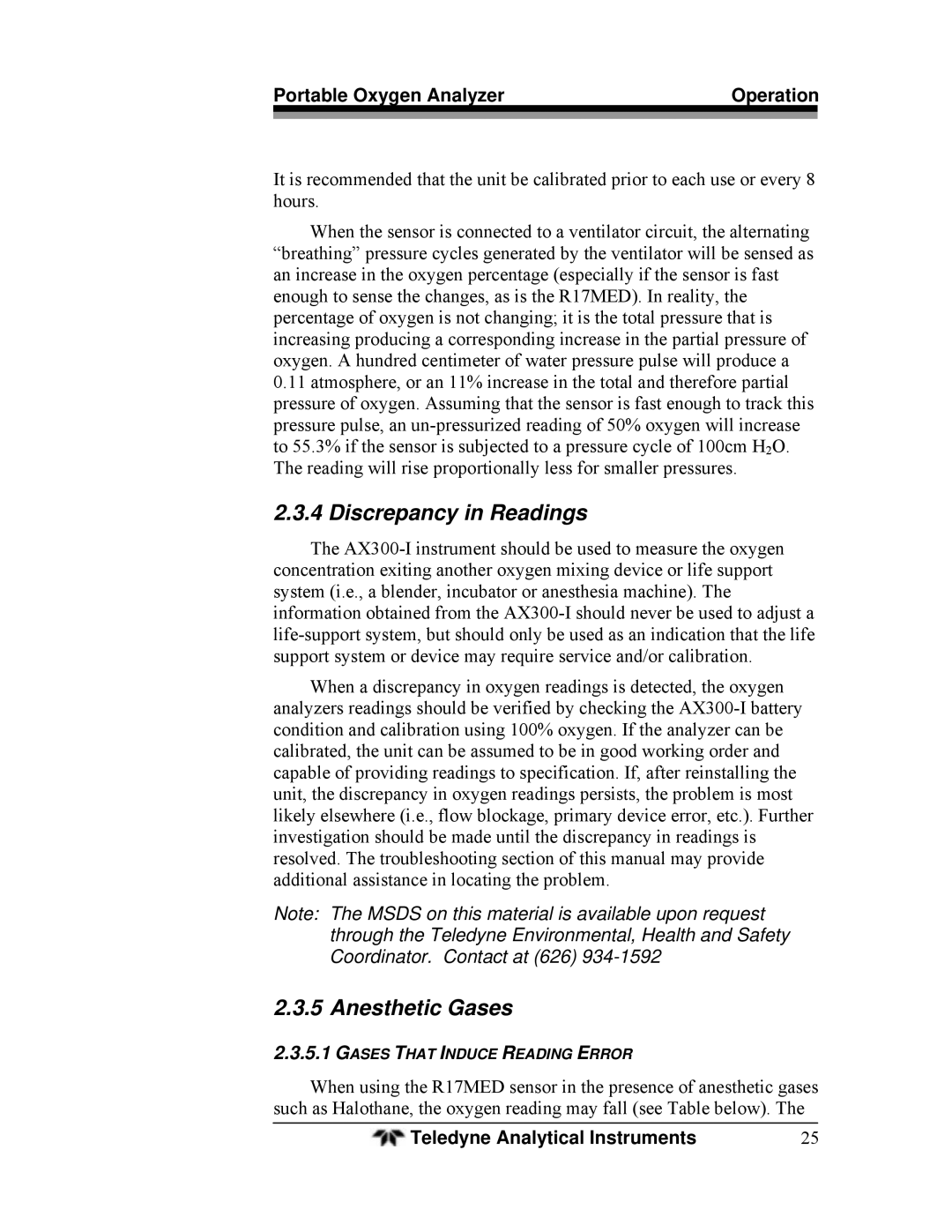Portable Oxygen Analyzer | Operation | |
|
|
|
It is recommended that the unit be calibrated prior to each use or every 8 hours.
When the sensor is connected to a ventilator circuit, the alternating “breathing” pressure cycles generated by the ventilator will be sensed as an increase in the oxygen percentage (especially if the sensor is fast enough to sense the changes, as is the R17MED). In reality, the percentage of oxygen is not changing; it is the total pressure that is increasing producing a corresponding increase in the partial pressure of oxygen. A hundred centimeter of water pressure pulse will produce a
0.11atmosphere, or an 11% increase in the total and therefore partial pressure of oxygen. Assuming that the sensor is fast enough to track this pressure pulse, an
2.3.4 Discrepancy in Readings
The
When a discrepancy in oxygen readings is detected, the oxygen analyzers readings should be verified by checking the
Note: The MSDS on this material is available upon request through the Teledyne Environmental, Health and Safety Coordinator. Contact at (626)
2.3.5 Anesthetic Gases
2.3.5.1GASES THAT INDUCE READING ERROR
When using the R17MED sensor in the presence of anesthetic gases such as Halothane, the oxygen reading may fall (see Table below). The
Teledyne Analytical Instruments | 25 |
